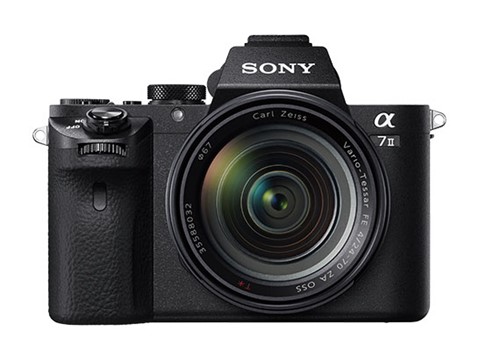
Sony’s decision to add five-axis in-body stabilisation to the A7 is a significant move in the mirrorless world. Up to now, in-body stabilisation has been restricted to smaller sensor cameras, with Olympus offering perhaps the best system in the new OM-D EM-1. Many mirrorless fans have gone with Olympus largely because of this advantage.
Up no now, however, in-body stabilisation has not been available on APS-C or full-frame cameras, with manufacturers such as Sony and Fuji focusing on lens technology to cope with camera shake and to add a few stops to low-light performance. This has left prime lenses and legacy lenses, such as Leica M-mount optics, out in the cold. While the A7 and A7r have been popular among the legacy lens crowd, the advantage over using, say, the APS-C Fuji X series, has been limited. Fuji’s excellent and mature lens stable has often tipped the balance.

The good news is that now Sony has shown the way, in-body stabilisation will inevitably come to be a necessity. I would like to think that Fuji, in particular, is even now working on a system for the X-T2 Many of us who use manual lenses are happy with the Fuji system. Even the cropped sensor does have its advantages in creating a second focal length from a given prime lens. Sony remains hampered by its lacklustre lens range in comparison with Fuji, but this is surely only a temporary handicap.
Innovation
Sony is a great innovator, as ever, and the shoehorning of a full-frame sensor into a camera (the A7) that is barely bigger than Fuji’s X-T1, was a triumph in itself. It was even more remarkable with the earlier RX1, although this camera benefited from the fact that the lens and camera were as one unit. Where Sony falls down is in its lack of focus, hopping from one new thing to another. No sooner do we drool over the A7r than along comes the A7s with yet another set of compelling features. And then, hot on its heels, comes yet another idea, the A7 with in-body stabilisation. Many owners will prefer this to the A7s, I suspect.
Fuji, on the other hand, is very clearly focused and everything the company has done since the introduction of the X series in 2010 has been methodical and complementary. Cameras and lenses have been introduced in a planned fashion and the result is a very serious and mature system in which buyers can have confidence. Even the original X-Pro 1 and the later X-E1 are still viable contenders, despite their age, and newer cameras tend to build on this success rather than replacing it with radically new ideas.
Sony’s initiative is welcome. But is it enough to cause those committed to other systems to think again and swap horses? I suspect many photographers will be suspicious, wondering what is going to come in the next six months. When is the right time to jump on the Sony bandwagon in other words. Those who bought A7s and A7rs only a few months ago will be wondering about this.
Yet the stabilised A7 is primarily welcome because it shows what is possible. In-body stabilisation is no longer confined to small-sensor cameras and that has to be a good thing.

Mike ,if only you were right about Sony’s lack of a lens range being a temporary handicap.There is no evidence that the penny has dropped for Sony on lenses.If it had they would have put their energies into pulling together decent range of lenses instead of going off and developing in- body stabilisation.
No one is going to switch systems to Sony even with in- body stabilisation whilst Sony full frame is not a system.End of story.
Sony somehow believe that the ability to use a very wide range of legacy lenses on the A7 is compensation for not having a range of decent dedicated lenses.It is not.I fell for that line and after a few weeks of manually focussing etc you say to yourself "this is silly" and leave the camera at home.
You could well be right, John. Already this morning I read that the A7 II will initially be restricted to the Japanese market, thus killing sales of the original model in other countries among those who keep up with the news. And already there are rumours of an A9 coming "in 2015" which isn’t very far away. It is no wonder than many people prefer the more structured approach of Fuji with their knack of looking after owners of legacy cameras with firmware updates and a feeling of belonging. As you say, Sony would have done well to place more emphasis on the lens lineup rather than on leapfrogging the opposition with party tricks with a short shelf life.